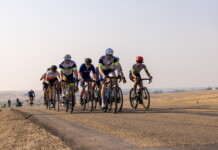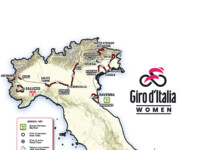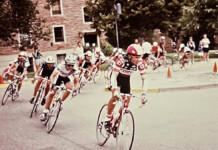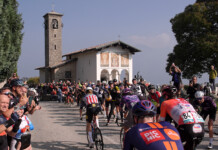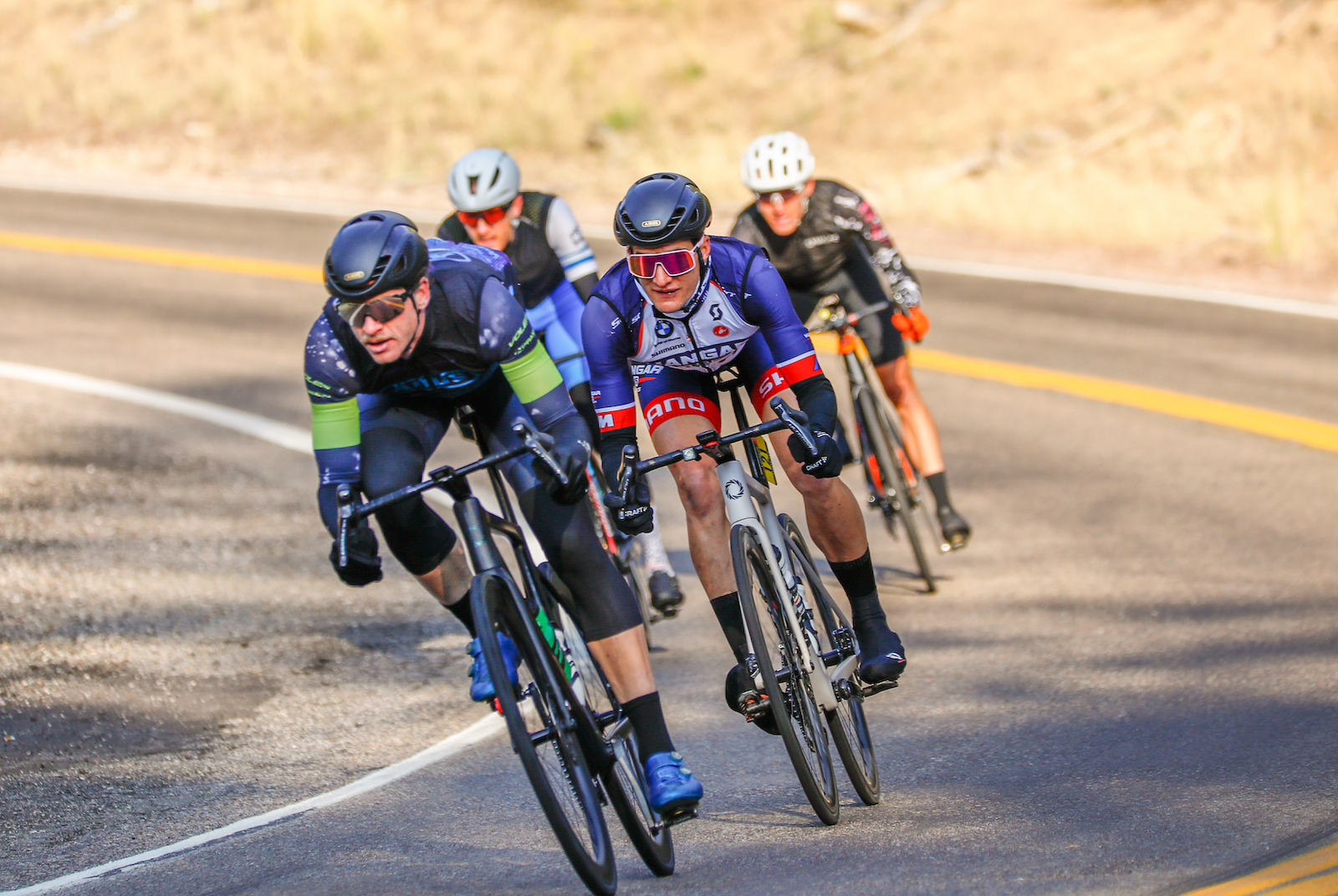Three titles for Pannecoucke; Van Wagoner avenges 2023 loss
By David Bern — The top pro victors in the 42nd annual LoToJa Classic on Sept. 7 showed that being fit and fast aren’t always enough to triumph at one of America’s coveted cycling road titles.
Sometimes, you have to risk losing — or try to break the course record — to win.
Cat. 2 Danny Van Wagoner, 32, (Team CycleSport.com) of Fruit Heights, Utah, won the Men Pro 123’s after attacking from an eight-man breakaway with less than three miles to go.
His winning time in the 203-mile (327 km) race from Logan, Utah, to Wyoming’s Jackson Hole Mountain Resort, was 8:50:24.22. His average speed was nearly 23 mph.
“I played all of my chips on that move,” Van Wagoner said of his attack. “If it [the break] had come back, I wouldn’t have had the kick for the sprint.”
Cat. 1 Aileen Pannecoucke, 27, (Team LA Sweat) of Pocatello, Idaho, won her third LoToJa Women Pro 123 title after beating five breakaway companions to the line. Her finish time was 9:43:26.37 at an average speed of 20.8 mph.
“I was relieved and happy to win!” she said. “It was an exciting way to end the season, although I was a bit disappointed not to break the record.”
Van Wagoner knew at the start line that he’d gamble to win after losing the Men Pro 123’s last year in a close sprint against Cat. 1 Adrian Rips, 30, (Team Next Level Racing) of Kaltenkirchen, Germany.
“I lost by half a wheel last year,” Van Wagoner said, who also holds a UCI Elite license and races in Europe on USA Cycling’s marathon mountain bike team. “I’ve thought a lot about that and wanted to correct it this year.”
Last year’s race wasn’t the only time he’s come close to winning. He took fourth in 2022 and sixth in 2021.
The day began for Van Wagoner and nearly 30 Men Pro 123’s and Men Master 35+ racers when their peloton left Sunrise Cyclery in the dark at 5:30 a.m. under clear skies and 52 degrees.
Due to lower field numbers and similar experience and ability, the two categories are allowed to start and race together. The same applies to Master Men 60+, 65+ and 70+ categories.
Van Wagoner said he was in a “good head space” at the start and confident in his form. He also suspected the day would be interesting without any teammates.
But with more road racing experience and a focus on patience, he would “preserve my matches for my kick when it mattered.”
He also had a game plan to make sure he’d have a chance to light those matches: He would create the break, or be in it, when the race likely erupted on LoToJa’s steep, four-mile-long 7,630-foot-high Salt River Pass (106 mi/171 km).
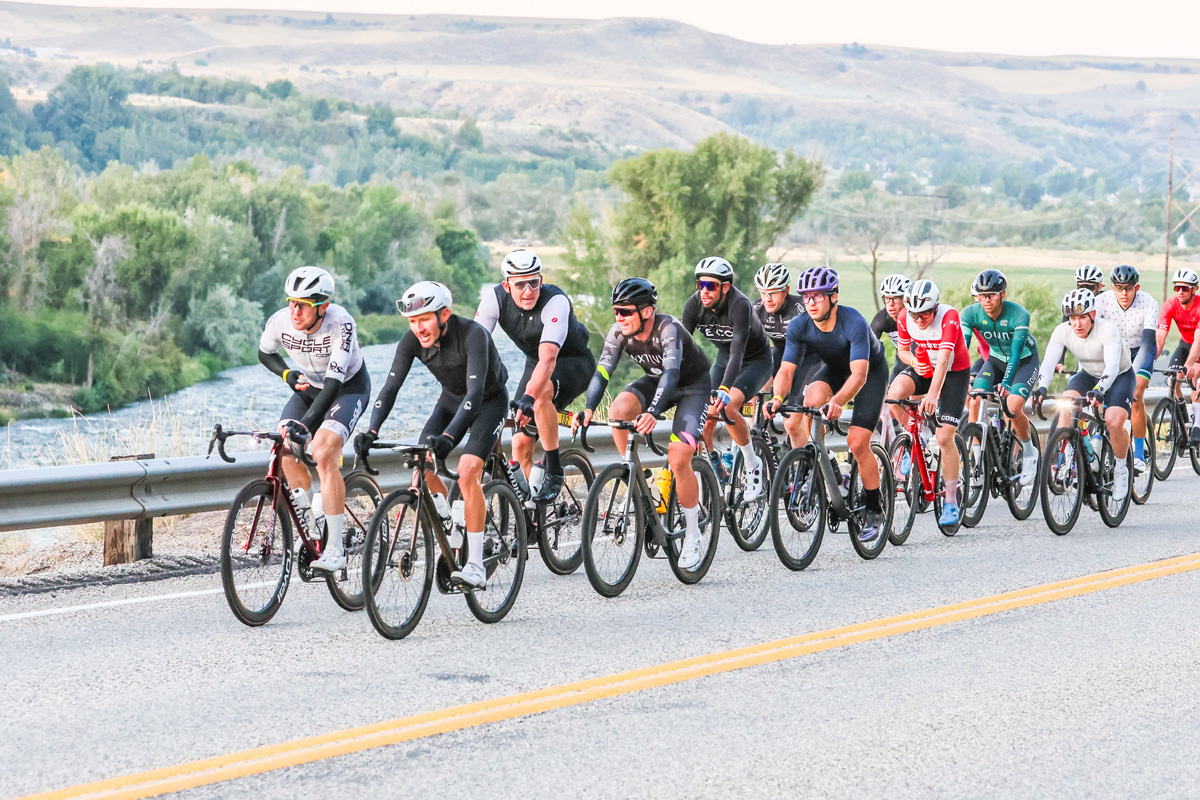
According to Van Wagoner, the peloton stayed together as it rode north to Preston, Idaho, (29 mi/47 km). But on the rollers a few miles after Preston, Cat. 2 Jesse Hogin, 35, (Unattached) of Henderson, Nevada, went off the front.
Hogin soon had a four-minute gap going up LoToJa’s first major climb, 22-mile-long Strawberry/Emigration Canyon and its 7,424-foot-high summit (57mi/92km). Van Wagoner said the peloton whittled down the gap to 90 seconds a few times, but then backed off. No one was fully committed to catch Hogin until later.
As the peloton climbed to the canyon’s summit, attrition began to mount. About 15 racers descended into Bear Lake Valley and to the first feed-zone at Montpelier (76 mi/122 km).
Even more got dropped over 6,923-foot-high Geneva Summit (84 mi/135 km). Twenty miles later on the ramps of Salt River Pass, the final break was established.
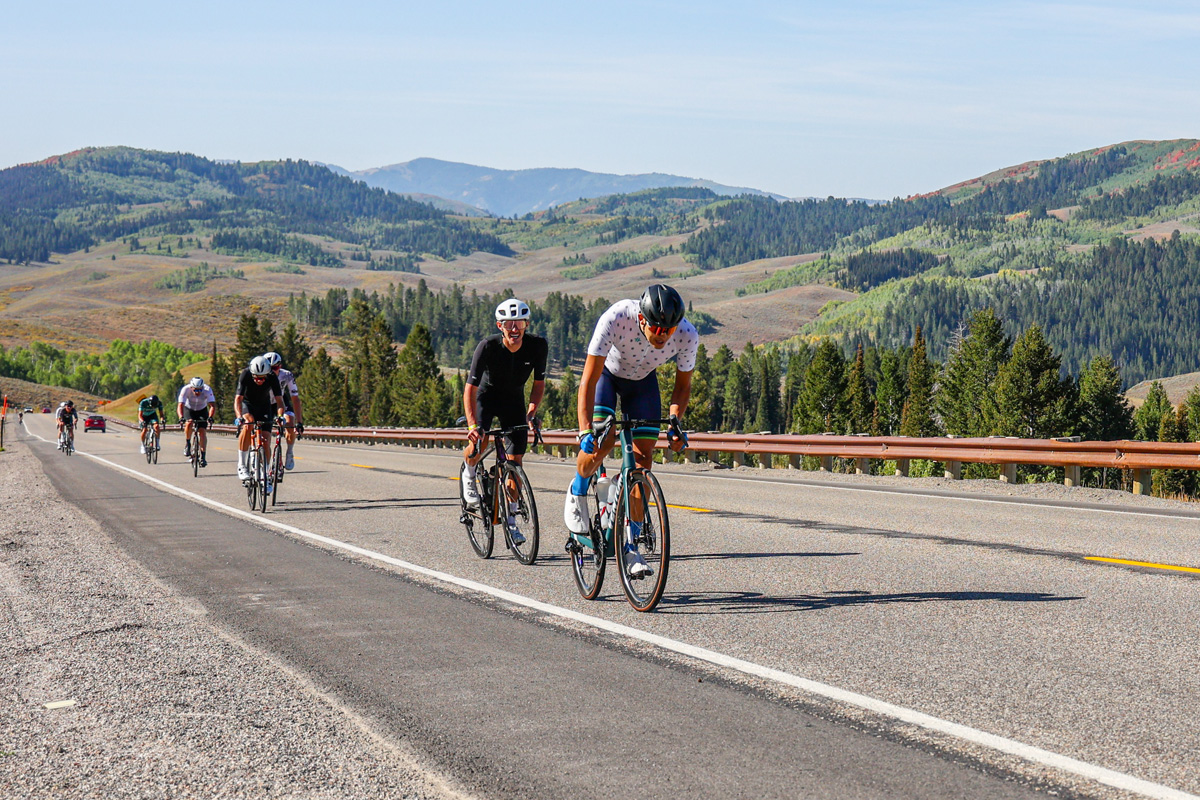
It consisted of Van Wagoner; last year’s Men Pro 123 winner Adrian Rips; Cat. 2 Eric Ellis, 41, (Team Formula 369.com) of Springville, Utah; Cat. 2 Gilberto Melendez, 36, (Team Fount Cycling) of Eloy, Arizona; Cat. 3 Jess Clapier, 31, (Team Mi Duole) of Salt Lake City, Utah; Cat. 2 Matthew Clark, 39, (Team Ascent Cycling) of North Salt Lake, Utah; and Cat. 3 Matthew Lefthand, 32, (Team Brainstoke) of Marriot-Slaterville, Utah.
Of those seven, it was Lefthand who reached the summit first with a time of 14:14 and average speed of 14.8 mph. But of the Men Pro 123’s, he wasn’t the fastest.
It was Hogin on his solo breakaway, who did the climb one second faster than Lefthand. And with Hogin still up the road and the break solidified, the seven men gave chase.
“We were flying through Star Valley, averaging 28 to 29 miles per hour,” Van Wagoner said. “It was a quick rotation. Everyone worked.”
Around 20 miles later, they finally caught Hogin after the Afton feed-zone (122mi/196km). Although he had been off the front for more than 90 miles, Hogin didn’t drift to the back and ride wheels. He worked the rotation like everyone else.
“I have massive respect for Jesse. Kudos to him,” Van Wagoner said. “He is a brave and strong rider.”
To stay clear of chasers, the now eight-man break sped through the rest of Star Valley to Alpine (156 mi/251 km). But once inside Snake River Canyon with 47 miles to go, some members of the break stopped pulling, Van Wagoner said.
At the same time, others took the opportunity to attack. Van Wagoner said Ellis and Hogin tried to get away but were reeled back. After Hoback Junction (178 mi/286 km), a strong headwind discouraged further attacks.
“At one point, Adrian [Rips] said aloud, ‘I guess everyone is just waiting for the sprint,’” Van Wagoner said.
Rips was right. The break stayed together on South Loop Road and over the Snake River Bike Path Bridge at Wilson. The stalemate continued on Moose-Wilson Road with the finish seven miles ahead.
It was wait and see. And for Van Wagoner, time to assess his options. He knew that he had to risk everything to beat Rips to the line.
“Adrian is a good sprinter,” Van Wagoner said. “My skills are 10-minute efforts. My coach told me to play to my strengths, that was in my mind.
“I had hoped there would have been an attack so I could have attacked after everyone regrouped, but that didn’t happen,” he added. “I told myself if no one attacks at 5K to go, I’ll attack at 4K.”
Which he did. For a full 30 seconds, Van Wagoner gambled on his strength and attacked with everything he had. He then looked back and saw that he had a gap. With each rider behind without teammates, for one of them to counterattack and chase Van Wagoner could mean losing second place.
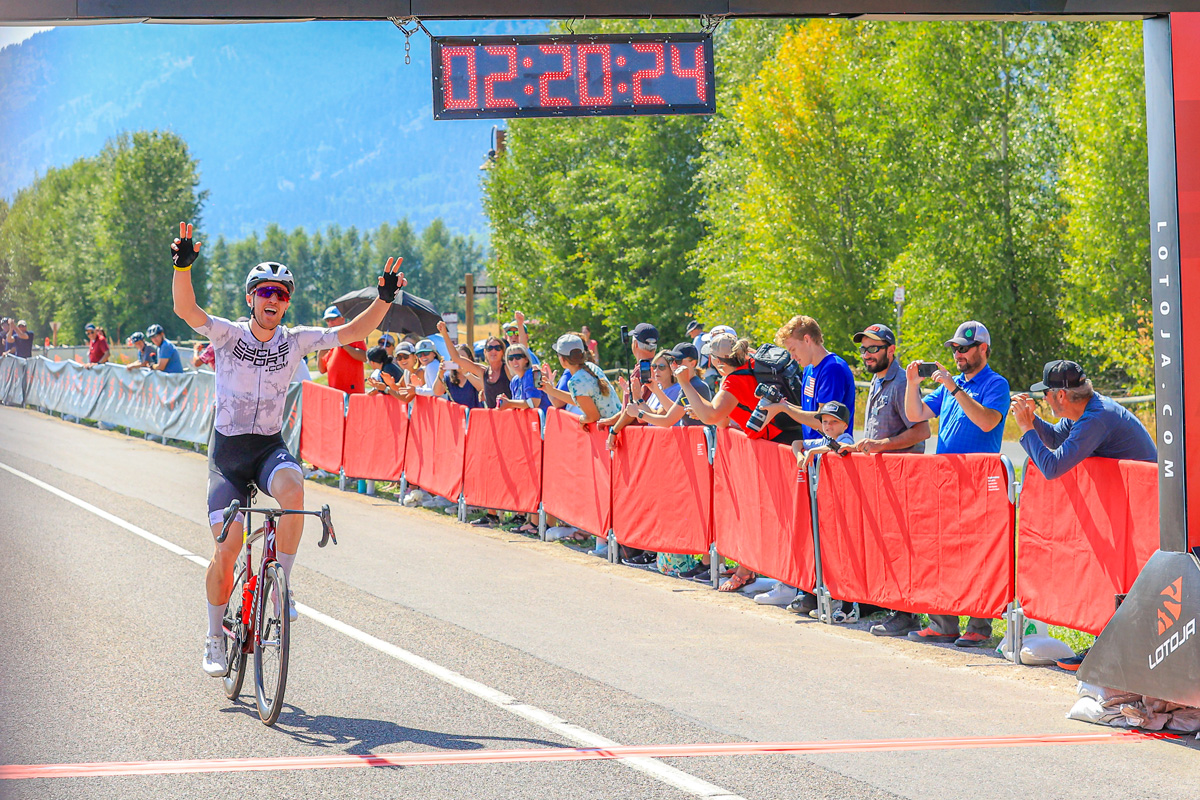
He flew across the finish line alone, followed six seconds later by Rips at 8:50:30.65; Ellis in third place at 8:50:31.09; Melendez in fourth at 8:50:31.41; Clapier in fifth at 8:50:31.58; Hogin in sixth at 8:50:31.76; Clark in seventh at 8:50:32.52; and Lefthand in eighth at 8:50:32.66.
Van Wagoner was thrilled about how his gamble had paid off, to cross the finish alone and avenge last year’s near-miss against Rips.
“It felt so damn sweet!” he said. “I was a little in disbelief. That finish from last year haunted me, so it was really gratifying to win.”
Van Wagoner said LoToJa is “the bicycle race to win in Utah.” The outreach he has experienced afterward has been “amazing.” He attributed that to LoToJa’s 43 years of existence and the general public’s — not just the cycling community’s — awareness of the race.
Van Wagoner, who comes from a cycling family and started mountain bike racing when he was 14 years old, is also a husband, father, and private banker. He said if all goes well and schedules align, he’ll be at LoToJa’s start line in 2025.
After taking 2023 off from LoToJa because of fatigue and starting a career, Aileen Pannecoucke returned this year with a single purpose: to break the women’s record of 9:35:00 that was set by Melinda Macfarlane 11 years ago.
“The goal I had made this year with my coach was to break the record,” Pannecoucke said. “That’s what I wanted to do at LoToJa — more than to win it. And if I was unable to break the record, I would figure out how to win.”
Which is why she immediately attacked the peloton of about 50 USA Cycling licensed women after it passed through the neutral rollout in Logan. The women’s peloton departed from Sunrise Cyclery at 6:42 am.
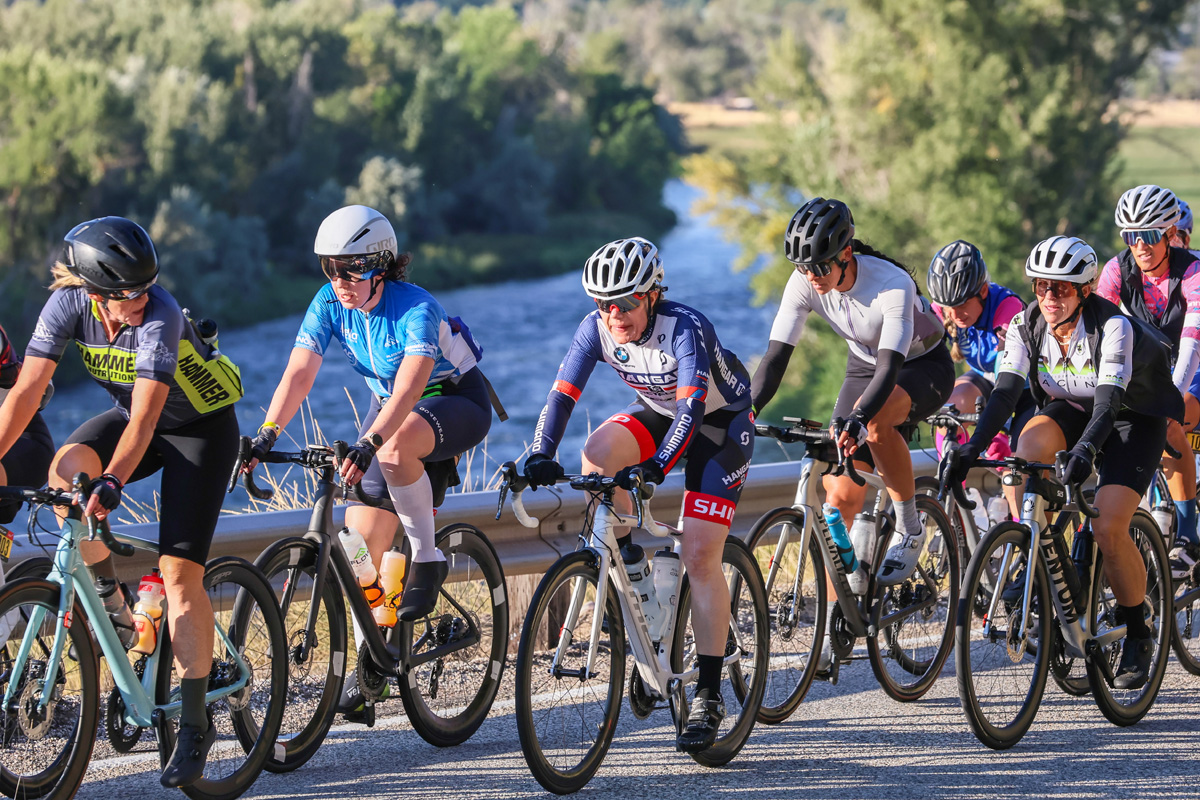
“To break the record, I knew we had to race immediately,” Pannecoucke said. “That’s why I attacked right after the neutral. I think I pissed them off.”
But that wasn’t her only attack. After the peloton bridged up to her, she jumped again. Pannecoucke did this up to four times before the Strawberry/Emigration Canyon climb.
“I wanted to make the race hard,” she said. “They probably thought I was crazy with all the attacking I did.”
Pannecoucke said she was in a break of about 10 riders at Strawberry/Emigration summit. She said the break didn’t work cooperatively on the descent to Bear Lake Valley and Montpelier, which ended her record attempt.
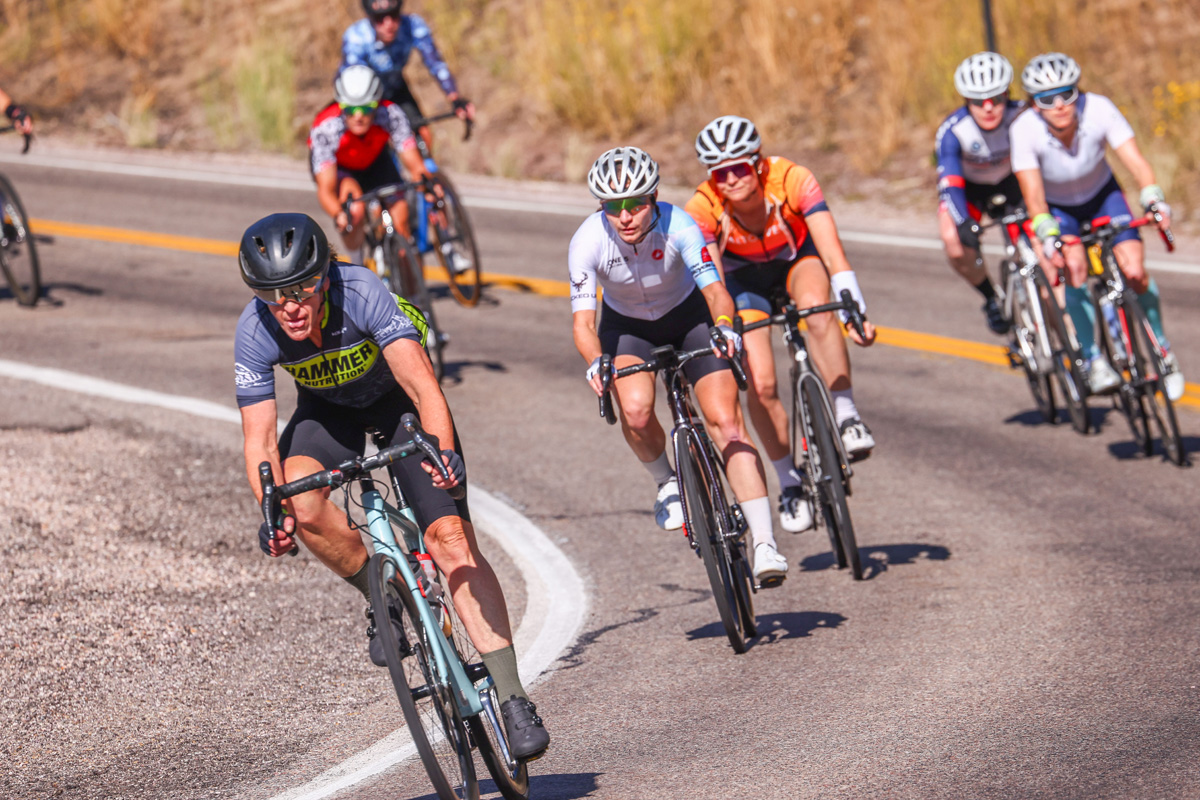
“Montpelier was only a 30-second stop for me. I went fast,” Pannecoucke said. The break resumed for the climb up Geneva, and by the summit, about eight riders remained.
On the descent from Geneva the break started to cooperate, with everyone taking solid, one-minute pulls, Pannecoucke said. This lasted for 14 miles to the base of Salt River Pass and on its initial ramps.
But the break started to lose cohesion about halfway up when Cat. 5 Hallie French, 39, (Team M&H) of Salt Lake City, Utah, went to the front and pushed the pace. Cat. 3 Katie Bonebrake, 33, (Team Zone 5) of Salt Lake City, Utah, followed.
Pannecoucke initially got dropped, but didn’t panic. She had worked hard on her climbing over the summer. Feeling confident, she bridged up to French and Bonebrake and was joined in the effort by Cat. 4/5 Sarah Esmeier, 27, (Team Pay N Take) of Flagstaff, Arizona.
Bonebrake won the Queen of the Mountain prize with a time of 17.42 and an average speed of 11.9 mph. She was followed by Pannecoucke; Esmeier; Cat. 1 Jennifer Halladay, 53, (Team Hammer) of Kuna, Idaho; French; Cat. 2 Marilyn Chychota, 47, (Team MCC) of Tucson, Arizona; and Cat. 5 Lori Castagnetto, 46, (Team Zone 5) of Provo, Utah.
The established break of seven women descended into Star Valley after a quick pee stop atop Salt River. Pannecoucke said everyone worked cooperatively to Alpine, up Snake River Canyon and past Hoback Junction. The break stayed intact with 2K to go on Moose-Wilson Road.
“I think Katie [Bonebrake] wanted to attack me,” Pannecoucke said. “I expected it to happen, but it didn’t.”
She said Castagnetto got stuck at the front and “I got second wheel with Jen [Halladay] next to me.” With 250 meters to go, Pannecoucke launched her sprint.
“It was a long way out, but sprinting is my strength, and I figured I was the only one who could do it for that far,” she said.
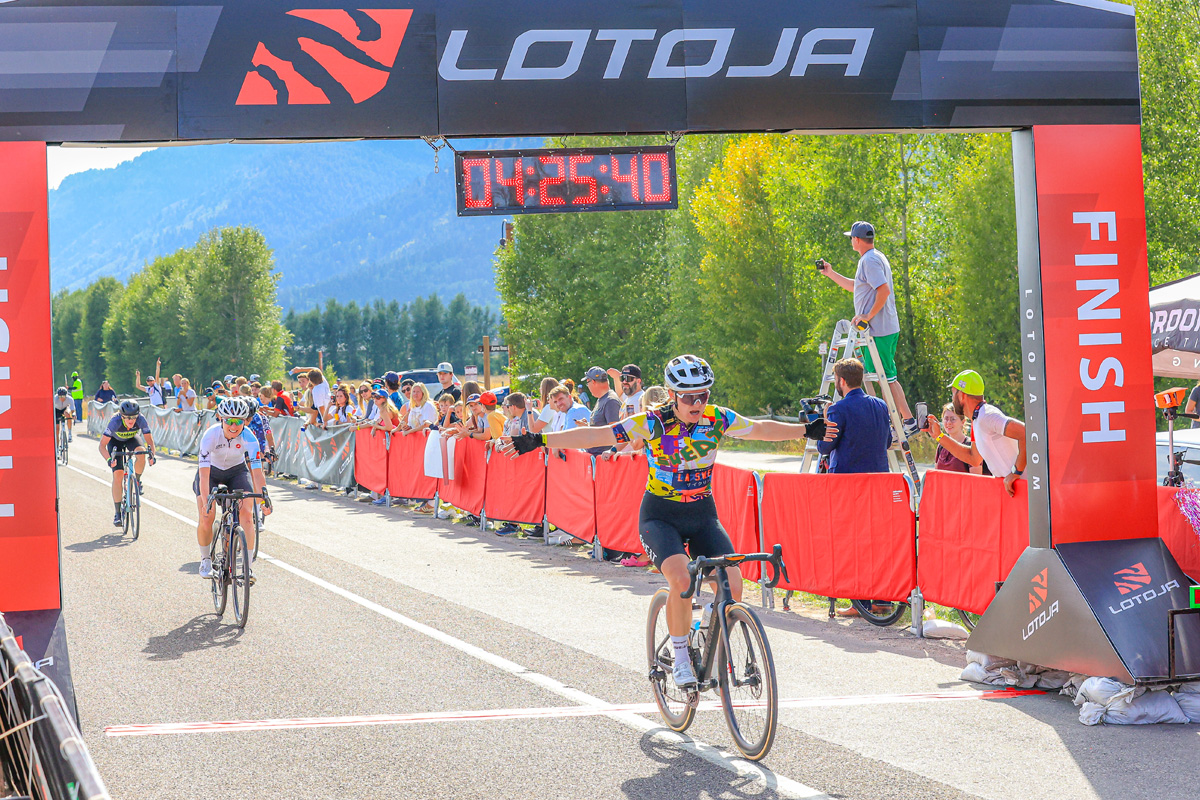
She sailed across the line with her arms outstretched, with Bonebrake second at 9:43:26.39, Esmeier third at 9:43:26.52, Halladay fourth at 9:43:26.55, Chychota fifth at 9:43:26.73 and Castagnetto sixth at 9:43:26.76. French came in just over three minutes later to take seventh at 9:47:09.
Although that’s how the break finished, it contained a mix of categories and ages, which affected final standings. Due to lower field numbers, all USA Cycling licensed women start and race together in LoToJa regardless of category and age. But respective category wins and placings are maintained despite mixed-category finishes.
Bonebrake is a Cat. 3, so her second-place finish behind Pannecoucke also gave her second place in the Women Pro 123’s. Esmeier finished third in the break but won the Women’s Cat. 4/5’s.
Fourth-place Halladay won the Women’s Master 45+ and her seventh LoToJa title, and fifth-place Chychota took third place in the Women Pro 123’s. Sixth-place Castagnetto took second place in the Women Master 45+, and seventh-place French won the Women Master 35+ and her fifth LoToJa title.
Pannecoucke, who comes from a cycling family and started racing at age 15 in her native Belgium, said that winning LoToJa is never easy and winning multiple times is even harder.
It’s an event that a lot of people follow. Expectations from family, friends — and oneself — to keep on winning, are high, she said.
“After all of the training and stress, it would have been hard to end the season with a second or third place,” Pannecoucke said. “… I was relieved to win and get it done.”
She said she’s not 100-percent certain that she’ll roll up to LoToJa’s start line next year. She plans to transition into triathlons in 2025. With that, and her career as a middle school science teacher and head coach for a high school co-ed swim team, may make it tough to be race-fit next year.
LoToJa features much more than pro categories for men and women. There were approximately 1,800 USAC licensed and non-licensed cyclists in the event. There were 28 separate start groups that included licensed race categories, plus non-licensed cyclosportive categories and relay teams.
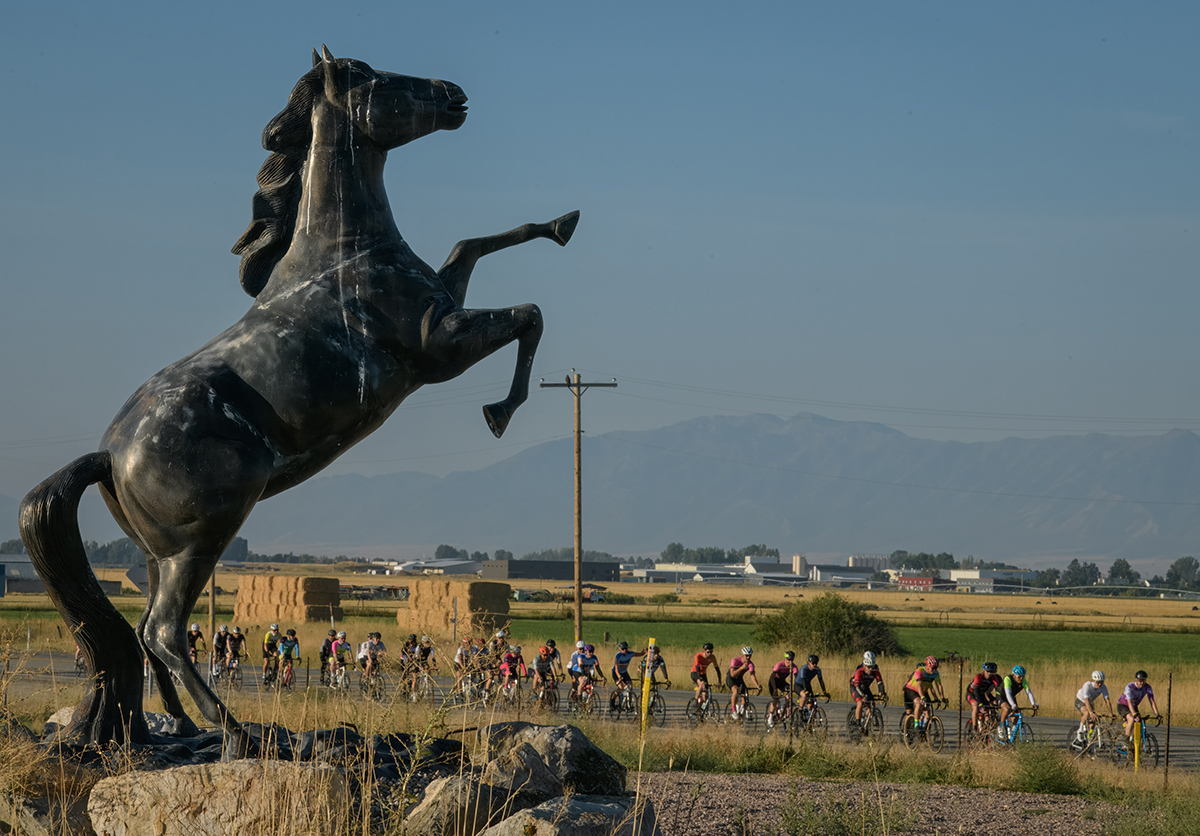
The groups left Sunrise Cyclery Logan in four-minute intervals to separate race and ride categories on the road. Each group contained an average of 40-50 cyclists.
Although Hogin was the first and fastest Men Pro 123 who assailed Salt River Pass, he did not win the KOM prize. That went to Cat. 3 Korby Van Valkenburg, 41, (Team Mi Duole) of Mapleton, Utah.
He climbed Salt River in 13:28 at an average speed of 15.6 mph. He also took second place in the Men Cat. 3/4 division.
The oldest female cyclist to start and finish was Barbara Sullivan, 68, (Unattached), of Carlsbad, California,whose finish time was 11:01:22.
The oldest male cyclist to start and finish was Richard Linton, 74, (Unattached), of Draper, Utah. He took seventh place in the Men Master 70+ with a time of 12:01:06.14.
The youngest female to start and finish was Natalie Rehklau, 17, (Team Frontiers Racing) of Billings, Montana, who finished with a time of 12:22:58. The youngest male was Andrew Holmes, 15, (Team Holmes on the Range) of Spanish Fork, Utah, who finished with a time of 12:47:22.
Complete finish line results are available at lotoja.com. Click on the “Results/Records” tab in the navigation bar.
“After 42 years, LoToJa continues to be a road race of endurance that appeals to cyclists of all ages and abilities,” said race director Brent Chambers. “It’s always an honor and privilege for me to be part of it and to witness the good, life-changing influence LoToJa has on all of its participants.”
He thanked cyclists, event staff and volunteers, sponsors, and vendors for making LoToJa possible and a success year after year. He also thanked the communities along LoToJa’s parcours for their continued support.
LoToJa is the longest one-day USA Cycling-sanctioned bicycle road race in the U.S. Its 203-mile parcours passes through northern Utah, southeastern Idaho, and western Wyoming. It crosses flat, hilly, and mountainous terrain, and features nearly 10,000 feet of climbing.
The first edition was held in 1983 with seven riders who started at Sunrise Cyclery and finished in downtown Jackson. Today, up to 2,000 cyclists participate, either riding the entire parcours or a portion in the relay.
The 43rd annual LoToJa will be held on Sept. 6. The race’s 2025 website will be launched next March with online registration beginning in mid-April.

